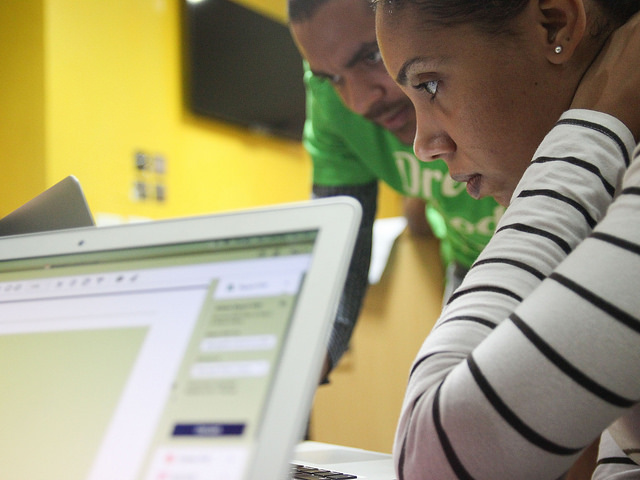Chromebook setup
If you already worked through the Installation steps, no need to do this again – you can skip straight ahead to Introduction to Python.
You can skip right over this section if you're not using a Chromebook. If you are, your installation experience will be a little different. You can ignore the rest of the installation instructions.
Cloud IDE (PaizaCloud Cloud IDE, AWS Cloud9)
Cloud IDE is a tool that gives you a code editor and access to a computer running on the Internet where you can install, write, and run the software. For the duration of the tutorial, cloud IDE will act as your local machine. You'll still be running commands in a terminal interface just like your classmates on OS X, Ubuntu, or Windows, but your terminal will be connected to a computer running somewhere else that cloud IDE sets up for you. Here is the instructions for cloud IDEs (PaizaCloud Cloud IDE, AWS Cloud9). You can choose one of the cloud IDEs, and follow the instruction of the cloud IDE.
PaizaCloud Cloud IDE
- Go to PaizaCloud Cloud IDE
- Sign up for an account
- Click New Server and choose the Django app
- Click Terminal button(on the left side of the window)
Now you should see an interface with a sidebar, buttons at the left. Click "Terminal" button to open terminal window with prompt like this:
Terminal
$
The terminal on the PaizaCloud Cloud IDE is prepared for your instructions. You can resize or maximize that window to make it a bit bigger.
AWS Cloud9
Currently Cloud 9 requires you to sign up with AWS and enter credit card information.
- Install Cloud 9 from the Chrome web store
- Go to c9.io and click Get started with AWS Cloud9
- Sign up for an AWS account (requires credit card information, but you can use it for free)
- In the AWS Dashboard, enter Cloud9 in the search bar and click it
- In the Cloud 9 dashboard, click Create environment
- Name it django-girls
- While configuring settings, select Create a new instance for environment (EC2) for "Environment Type" and the t2.micro "Instance type" (it should say "Free-tier eligible."). The default cost-saving setting is fine and you can keep the other defaults.
- Click Next step
- Click Create environment
Now you should see an interface with a sidebar, a big main window with some text, and a small window at the bottom that looks something like this:
bash
yourusername:~/workspace $
This bottom area is your terminal. You can use the terminal to send instructions to the remote Cloud 9 computer. You can resize that window to make it a bit bigger.
Virtual Environment
A virtual environment (also called a virtualenv) is like a private box we can stuff useful computer code into for a project we're working on. We use them to keep the various bits of code we want for our various projects separate so things don't get mixed up between projects.
Run:
Cloud 9
mkdir djangogirls
cd djangogirls
python3.6 -mvenv myvenv
source myvenv/bin/activate
pip install django~=2.2.4
(note that on the last line we use a tilde followed by an equal sign: ~=).
GitHub
Make a GitHub account.
PythonAnywhere
The Django Girls tutorial includes a section on what is called Deployment, which is the process of taking the code that powers your new web application and moving it to a publicly accessible computer (called a server) so other people can see your work.
This part is a little odd when doing the tutorial on a Chromebook since we're already using a computer that is on the Internet (as opposed to, say, a laptop). However, it's still useful, as we can think of our Cloud 9 workspace as a place for our "in progress" work and Python Anywhere as a place to show off our stuff as it becomes more complete.
Thus, sign up for a new Python Anywhere account at www.pythonanywhere.com.
